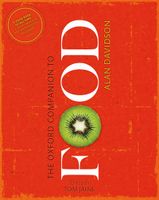Advertisement
Horseradish Tree
Published 2014
The long, narrow pods or fruits contain a whitish mass in which three-winged seeds are embedded. These pods, when still young, are cut into short lengths and used in Indian curry dishes. The outside of the pod remains inedible and is discarded, but the mucilaginous inside and the immature seeds have a pleasant, slightly hot taste. As Ochse (1980) remarks: ‘The stewed fruits cannot be eaten whole, but one sucks their contents and throws the tough valves away.’


